Havana world. Is the Colombian Civil War Over?
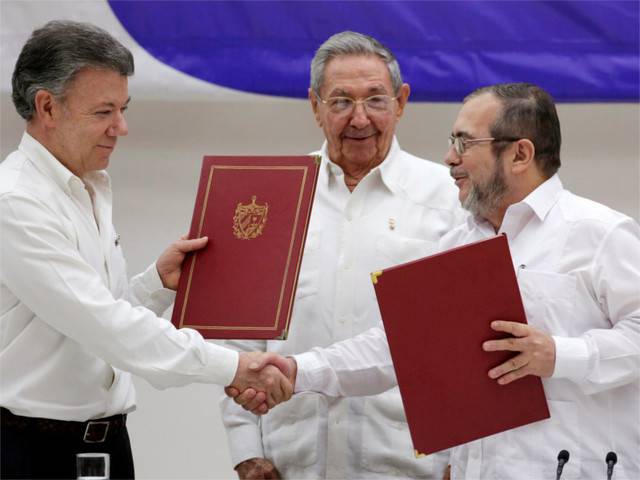
Recall that the civil war in Colombia - the longest armed conflict in Latin America. For many decades, the rebels of the Revolutionary Armed Forces of Colombia waged a bloody armed struggle against the government of the country with the aim of a communist revolution and the construction of a communist state in Colombia. The victims of the civil war were 220 thousands of people, many millions of Colombians lost their homes and turned into refugees. The main ally of the Colombian government has always been the United States of America, which provided extensive military assistance to the Colombian army and police. On the other hand, the FARC-AN enjoyed the support of Cuba and left-wing radical movements not only in Latin America, but throughout the world.
History the civil war in Colombia goes to the end of 1940-ies, when an armed conflict, known as "La Violencia", was raging in the country. At that time, armed groups of the conservative party, which defended the interests of large landowners and foreign companies, and the liberal party, which supported democratic reforms, opposed each other. The latifundists created gangs that terrorized the peasant population. In turn, under the auspices of the liberal party, insurgent detachments were formed that fought a partisan war against the latifundists. The armed struggle continued even when the liberals and conservatives managed to reach a peace agreement. Gradually, the Communist Party of Colombia began to play a dominant role in the partisan detachments. He was joined by a young man named Pedro Antonio Marin (1930-2008), who had previously fought in one of the rebel liberals.
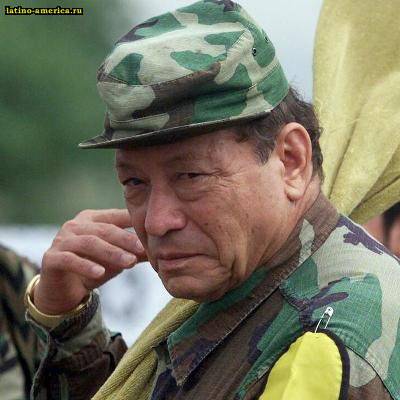 Decades later, Pedro Marin will receive world fame - but already under the name of Manuel Marulanda. Although La Violencia ended at the end of the 1950s, many of the guerrillas of yesterday did not intend to return to peaceful life. In 1964, Manuel Marrouland created a squad of rebels from 47. It was this armed formation that later became the basis for the creation of the Revolutionary Armed Forces of Colombia.
Decades later, Pedro Marin will receive world fame - but already under the name of Manuel Marulanda. Although La Violencia ended at the end of the 1950s, many of the guerrillas of yesterday did not intend to return to peaceful life. In 1964, Manuel Marrouland created a squad of rebels from 47. It was this armed formation that later became the basis for the creation of the Revolutionary Armed Forces of Colombia. Over the decades of the FARC, the number of rows of this organization has grown to several tens of thousands of people. A major role in the growth of the real potential of the FARC was played, firstly, by organizational assistance from Cuba and the world communist movement, and secondly, by imposing a revolutionary tax on coca producers. American intelligence agencies have repeatedly accused the FARC of involvement in the drug business, but here it is necessary to understand the local specifics. First, in many Latin American countries, coca cultivation is the only source of income for millions of Indian peasants. Secondly, not only rebel groups, but also government troops, and, of course, the American special services themselves did not disdain control over drug trafficking. And thirdly, among the left radicals of Latin America there even existed the concept of struggle against imperialism and capitalism with drugs - they say, drugs are sent to the United States and Europe, where the decaying population of the “golden billion” countries is dying out of their use.
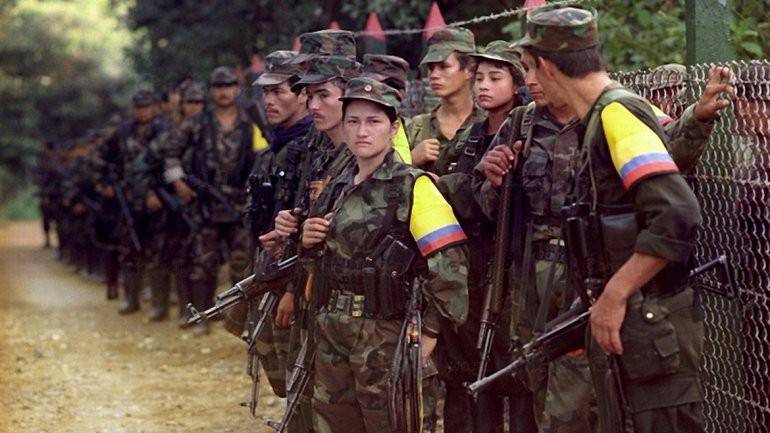
However, the decision to levy a “revolutionary tax” on coca producers caused a negative reaction from the political leadership of the Communist Party of Colombia, as politicians feared to lose support from the USSR and discredit the communist movement with links to drug dealers. But the armed wing of the party was more pragmatic about these issues. Therefore, field commanders created a new political wing of the FARC - the Underground Communist Party of Colombia.
From the very beginning of its activities, the FARC-AN focused on the Cuban experience of the guerrilla and adhered to Castroist and Hevarian ideas. This provided the Revolutionary Armed Forces of Colombia with the support of Cuba, which did not stop even after the collapse of the Soviet Union and the changing global political situation. More recently, in 2008, the leader of the Cuban revolution, Fidel Castro, called on the Colombian rebels not to abandon the continuation of the armed struggle, although he condemned some of the actions of the FARC-AN, including the taking of foreign citizens hostage.
The activity of the FARC-AN was supported by a significant part of the Colombian peasantry. As is known, Colombia was and remains one of the main outposts of Washington in Latin America. The social and economic policies of the Colombian leadership have always remained relevant and implemented in the interests of American corporations and their own big bourgeoisie. Therefore, the peasantry lives in poverty, the polarization between the “white” and the Amerindian population is very pronounced. The FARC-AN, which proclaimed its goal of achieving social justice and equality, of course, met with support from the Indian peasantry. It is the Indian peasants who form the basis of the mobilization potential of the Revolutionary Armed Forces of Colombia, although among the middle and senior commanders of the FARC-AN there are a lot of intellectuals, including former students from the “1968 generation of the year” who left for the time being partisans, and then partisan commanders or commissars. In addition, revolutionary-minded volunteers from other Latin American countries and even from Europe have been flocking to Colombia for a long time. They were attracted by the idea of the struggle against American imperialism, which the Revolutionary Armed Forces of Colombia consistently put into practice.
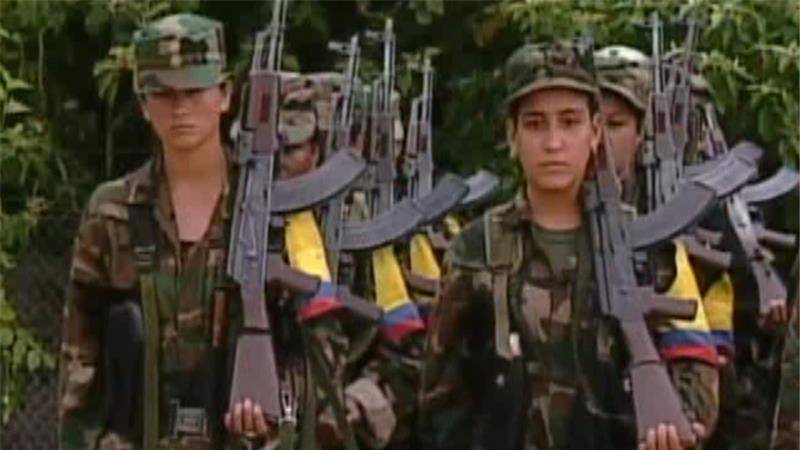
At one time, Simon Bolivar paid attention to the danger of American influence for Colombia. Indeed, the United States has always been very interested in controlling the political situation in this country, since the territory of Colombia is rich in natural resources. Therefore, the FARC-AN has always opposed American imperialism, US intervention in the internal affairs of the Colombian state. But the pro-American regimes of Colombia preferred not to defend the interests of their own people, but rather to go about Washington, providing for the sale of national wealth and resources for a pittance and turning the country into a space of exploitation by American corporations. In turn, the United States has provided and continues to provide the most serious military assistance and informational support to the Colombian government. For many decades, tens of billions of US dollars were sent by Washington to finance weapons, uniforms, training the Colombian army, police and special services. Perhaps no Latin American regime has received so much assistance from the United States. In terms of American military aid, Colombia ranks third among the countries of the world, after Egypt and Israel.
It is possible that without American support, the regime in Bogota could have fallen many decades ago and in Colombia a national socialist revolution would have triumphed. But this the United States tried to prevent all possible forces. Great displeasure of the Colombian leadership is caused by the policy of Cuba, as well as neighboring Venezuela and Ecuador, which Bogota accuses of providing military assistance to the rebels and providing its territory for the rebel training and supply bases.
Even in the 2000s, the Colombian leadership and the command of the FARC-AN failed to come to a compromise and make peace. Both the representatives of the oligarchy, who influenced the policies of the Colombian government, and the commanders of the FARC-AN, especially representatives of the older generation of partisans, whose entire conscious life passed in the jungle, objected to this. After the 2008-year-old commander of the FARC-AN Manuel Marulanda died of myocardial infarction in 78, he was replaced by the 60-year-old Raul Reyes (1948-2008) - also one of the guerilla veterans who once headed the labor union at Nestlé ", But then went into the jungle - to fight against imperialism and the comprador bourgeoisie. However, in the same 2008, March 1, Colombian aviation bombed the training base of FARC-AN in neighboring Ecuador. The victims of the air raid, which, incidentally, is a gross violation of international law, were 17 fighters of the FARC, including the commander Raul Reyes himself. Replacing Reyes as commander in chief of the Revolutionary Armed Forces of Colombia, Commander Alfonso Cano (1948-2011) died three years later - in 2011.
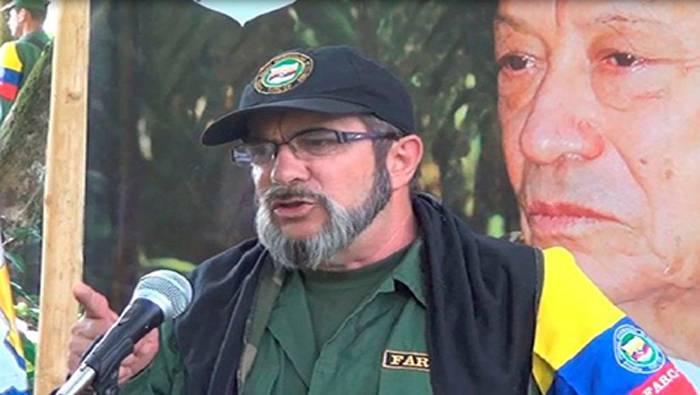
The new commander of the Revolutionary Armed Forces of Colombia, Timoleon Jimenez (born 1959), once studied cardiology in the Soviet Union, then underwent military training in Yugoslavia. Among the rebels, he is known under the pseudonym "Tymoshenko" - in honor of the famous Soviet marshal. Despite the fact that Timoleon Jimenez is also considered a representative of the radical wing of the FARC-AN, in the end he also came to the conclusion that it was necessary to negotiate peace with the government.
The civil war, which lasted more than half a century, brought a lot of pain to the Colombian people. Therefore, its ending will be a blessing for the Colombians, another thing - what will be the consequences of the integration of yesterday's partisans into the political life of Colombia after their disarmament and the cessation of armed struggle? 23 September 2015 President of Colombia Juan Manuel Santos and Commander-in-Chief of the FARC-AN Timoleon Jimenez held a meeting in Havana, where they discussed the terms of a peace agreement. The mediator at the meeting of the President of Colombia and the Commander-in-Chief of the FARC-AN was Cuba's President Raul Castro. And 25 August, it became known that the next series of negotiations between the Colombian leadership and the command of the FARC-AN ended with the conclusion of a long-awaited peace.
The peace treaty, which completes the half-century history of the armed confrontation between the government and the communist partisans, contains six points. First of all, this is a general agricultural reform. The FARC-AN has always positioned itself as a defender of the interests of the Colombian peasantry and, for the partisans, improving the lives of the peasant population through agrarian reform is one of the most important goals. Secondly, the FARC-AN receives, in accordance with the treaty, the opportunity to participate in the political life of Colombia, including in the parliamentary elections. Considering that the Colombian society was in fact split for a long time, the FARC-AN will, if legalized, become one of the largest political forces in the country. The third clause of the agreement implies a cease-fire on both sides. In addition, the contract discusses the organization of compensation for victims of armed conflict, and also contains proposals to address the situation with the production and trafficking of drugs in Colombia.
Are there any prospects for the Colombian left from the FARC-AN in the event of a real cessation of armed resistance? The Latin American history shows that the integration of yesterday’s rebels into peaceful political life is proceeding quite calmly. A typical example is Uruguay, where the “Tupamaros”, who for a long time led the armed struggle, then turned into a left-wing political party operating in a parliamentary field. But is a similar scenario possible in Colombia? After all, in this country social and political contradictions are too obvious and tough, and over half a century of civil war, the opposing sides have accumulated enormous mutual insults and complaints. Plus, one should not forget about the subversive activities of the American special services. For a long time, it was Colombia that remained one of the key military and political allies of the United States in Latin America. Given that leftist ideas are very popular among the Colombian population, the American leadership will try by all means to prevent the victory of yesterday’s rebels in the elections. After all, if a left-wing government comes to power in Colombia, then a real “red belt” “Ecuador - Colombia - Venezuela” will be formed, in which the middle managers are lacking today. For Washington, this will be a colossal political fiasco in Latin America and it is clear that the American leadership will try to prevent such a development of events.
It should also not be forgotten that the FARC-AN is the largest, but not the only Colombian military-political organization leading an armed struggle against the government. The country has a large number of partisan units that are not subordinate to the command of the FARC-AN. Their leaders can continue the course of armed struggle, guided either by more radical political views than the command of the FARC-AN, or by their own economic interests. To a greater extent, this applies to those formations that are closely related to the drug business and for which legalization means the cessation of colossal shadow financial flows.
- P P 'SЊSЏ RџRѕR "RѕRЅSЃRєRёR№
- http://www.aljazeera.com/, http://www.latino-america.ru/
Information